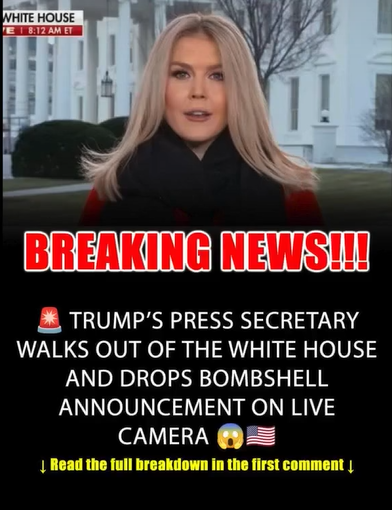The Trump administration has announced a new initiative targeting nearly two million federal employees: the “deferred resignation program.” The program offers federal workers full pay and benefits through September if they choose to resign by February 6, 2026. The announcement has sparked debate across the United States, with supporters highlighting efficiency and critics warning of potential disruptions to public services. According to officials, the initiative is designed to reduce government spending while encouraging federal employees to return to the office. Currently, only about 6% of federal employees in Washington, D.C., report in person, according to internal surveys. Supporters argue that the program will help modernize the federal workforce, increase efficiency, and provide greater flexibility in government operations.
White House Response
Press Secretary Karoline Leavitt denied claims that the program constitutes a political purge. “This initiative is about improving government operations, saving taxpayer dollars, and offering employees options,” she said during a press briefing. “It is voluntary, and no one is being forced to leave their position.”
Supporters Weigh In
Proponents of the program, including some policymakers and analysts, describe it as a necessary step to streamline operations and remove obstacles to modernization. “The federal workforce must adapt to the realities of remote work and operational efficiency,” one analyst noted. “This program provides employees with choices while helping government agencies function more effectively.”
Critics Push Back
Union leaders, career employees, and some lawmakers have raised concerns about the program’s potential impact. Critics argue that it could pressure long-term federal employees to resign and may disrupt essential public services. “This is not merely a cost-cutting measure; it risks undermining institutional knowledge and the quality of service Americans rely on every day,” said one union spokesperson. Some employees also expressed uncertainty about the timing and consequences of resigning, citing the challenges of finding new employment or transitioning from long-standing federal roles.
Potential Implications
The program carries significant stakes for the future of public service in the United States. If successful, it could reshape federal workforce operations, increase telework flexibility, and reduce government expenditures. However, if poorly implemented, it could lead to staffing shortages, reduced morale, and public backlash. Both supporters and critics agree that the coming months will be critical in evaluating the effectiveness of the buyout program. Federal agencies are preparing to provide guidance and resources for employees considering the offer, while Congress monitors potential impacts on essential services. The debate highlights the tension between modernization, cost efficiency, and maintaining a stable, experienced public workforce. As the program unfolds, its long-term effects on federal operations and public service delivery will be closely watched by policymakers, employees, and the American public alike.
